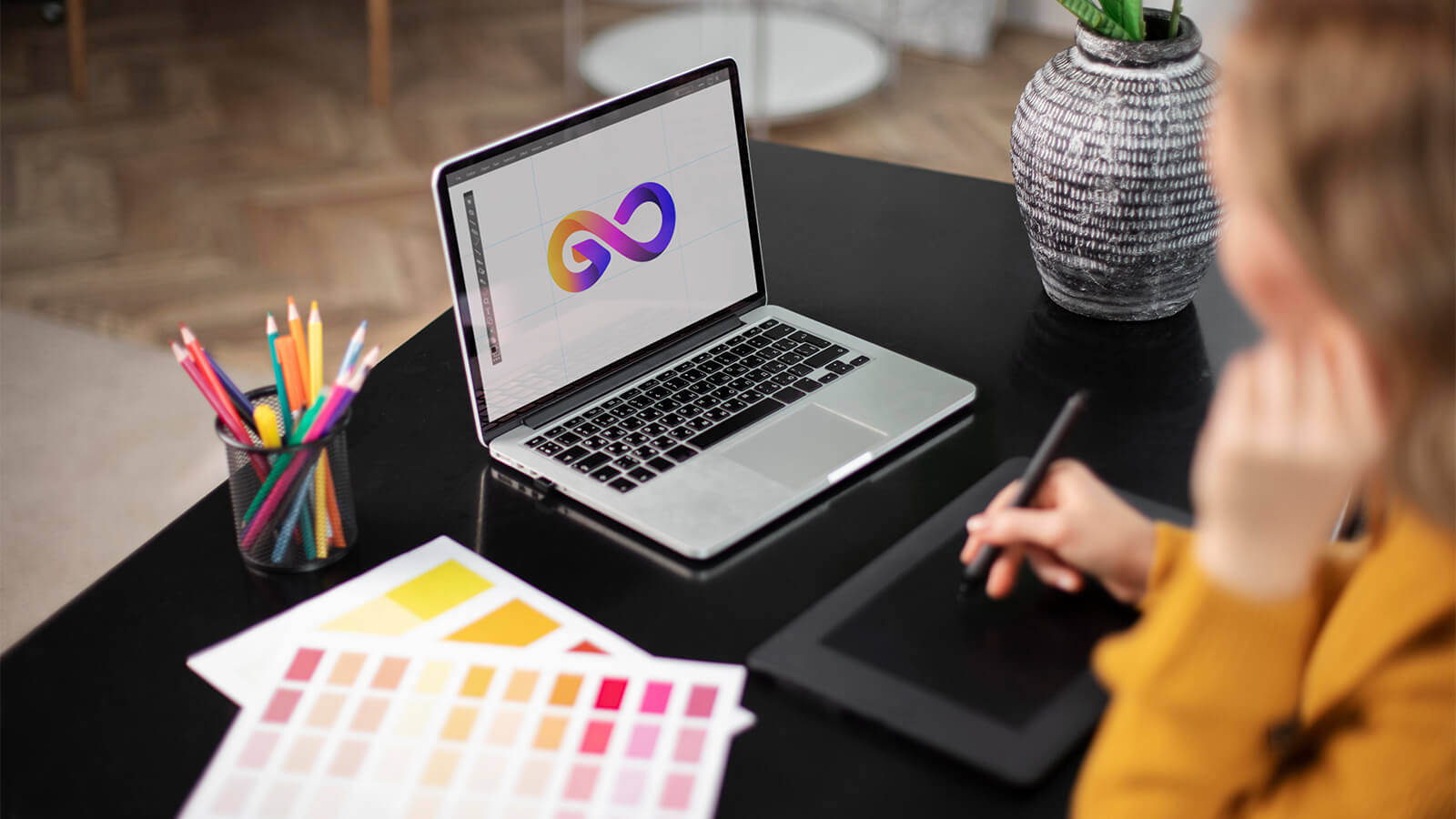Benefits Of Graphic Design: Why Is It A Must?

What Is A Graphic Designer?

Simply put, graphic designers use both digital and print technologies to create unique designs for different purposes. Among their most important everyday tasks are creating advertisements, logos, posters, websites, and packages.
A graphic designer studies the customer’s requirements in an interaction and artistically realizes those requirements. Graphic design plays a big role in the opinion that the average consumer would have over a company.
Several, if not all, graphic designers are also art practitioners. They ensure that every design is eye-catching and speaks of the topics through proportions and patterns. Their designs are seen on various platforms, including magazines, online sites, and product containers.
Apart from strong artistic skills, graphic designers must also be detail-oriented. Their creativity encourages consumers and enhances ideas for publication in a visual way, making them very important in the visuals of ideas.
Benefits Of Graphic Design For Businesses

Graphic design is an essential part of businesses’ operations, especially for small companies, owing to its ability to create brand images, brand characters, and impact, among other things. So, let us observe the major benefits of graphic design in detail.
It Helps Build An Important Business Element – Brand
Branding represents a corporation in the form of images to outsiders. Brand imagery includes logos, brand colors, typography, and icons.
Brand identity is an effective medium for expressing people’s beliefs and principles. Graphic design is an important component in the process of building an image.
Well-done graphic designs enhance the status of your brand towards consumers and the perception that the brand gives away. This also gives the company a favorable reputation due to its unique branding.
It Gives Personality To Your Brand
Graphic design makes your brand come to life. Instead of being average and Generic, a happy, friendly, or creative brand can drive many sales.
Consumers will always prefer using your brand over your competitors if they relate to the brand’s personality. With custom graphic design, your business is bound to be unique and win loyal clients.
It Makes A Powerful First Impression
When someone looks at a company, a lot could be made only on the first brief encounter. For small businesses, first impressions are crucial.
Good graphic design can be said to be like putting the business in the right clothing. An attractive, well-put-together brand identity aroused interest and attention.
If clients perceive designs as high quality, their positive impression of the company’s reliability and professionalism increases.
Competitive Advantage
Generating Brand Awareness
Enriching Communication
Designing Marketing Content That Work
Even in the neurological age, print media remains useful. Advertising can also take the form of posters, brochures, or business cards.
If ever there were a well-crafted print piece, it would most likely be remembered for a long time. This usually makes printed information more appealing and easier to read since the design aspects are up to the required standard.
What Are The Benefits Of Being A Graphic Designer?

Gaining New Skills
Graphic design offers a wealth of advancement possibilities. However, many designers struggle to learn how to acquire new knowledge and adapt to the changing demands of a new design project.
With the evolving technologies and new tools, work is ever-changing. Exposure to other cultures and design styles is beneficial to a designer’s outlook.
New skills are not only interesting but also help ensure a well-rounded portfolio. People are driven to be creative and can adapt to changes because there’s always something new to learn.
As they acquire more problems to solve, designers become more efficient in executing various projects and, therefore, more marketable.
Possibility To Work In A Variety Of Environments
Working Regular Hours
Most graphic designers are comfortable with the standard eight hours of work from 9 in the morning to 5 in the evening. Adhering to such a schedule provides a greater purpose, which in this case is assisting them in maintaining that work-life balance, which reduces stress.
Schedules vary between organizations, but most designers are accustomed to the routine. On the other hand, freelancers can set their hours and workloads.
The ability to control one’s workload and hours appeals to many designers. Since there are no set work hours, the designers can focus on design without the pressure of a clock.
Possible Role Of Remote Workers
Owing to the current technological developments, graphic designers can carry out their tasks from any location without restriction. With the adaptation of computers to design, most jobs of this nature can easily be completed.
It is common for designers to use social networks to interact with clients, which helps them meet client expectations of their work. With this mobility, available employment opportunities go beyond regional markets.
Satisfaction
Graphic artists derive a specific degree of satisfaction from successful task completion. After completing a specific job, a feeling of satisfaction and pride arises.
It is rewarding to witness the implementation of their different designs, whether on the internet, in merchandise, or advertisements. This satisfies their creative work even more, given that they receive this feedback immediately.
Thus, the designers are moved by the happiness of creating something that works and looks nice. This feeling of accomplishment propels them to dare to ‘reach for the skies’.
Satisfactory Pay And Perks
The pay scale may be very high for skilled graphic designers, irrespective of whether they are employed or whether they are self-employed. There are good perks as well as a range of annual compensation for freshers as well.
Health benefits and paid vacations are usual for workers from substantial corporations. They work only the hours that fit their lifestyle, undertake only the projects they consider attractive, and set their fees.
With experience and skill acquisition, designers can significantly increase their earnings. Salary prospects are one of the factors that make graphic design an appealing career to artistic people.
Chance To Work With Reputable Organizations
It is well-accepted that gaining work experience in well-acknowledged organizations is an asset that most, if not all, graphic designers seek after. Collaborating with famous companies will enhance your credibility and marketability even further.
Portfolios and creativity go hand in hand, and it seems that why many designers willing to establish portfolios are more likely to receive more work opportunities. Over time, advancements in the additional projects a designer can handle are promoted.
Working with multiple organizations allows designers to explore different markets, broadening their perspectives. A significant experience gained upon each project makes them feel they are on a career path of growth.
Resource Accessibility
Graphic designers are often given high-end software and hardware resources, which enables them to deliver high-quality work.
The tools provided by the organization help many designers who wouldn’t have been able to buy them otherwise. This freedom allows them to acquire unknown skills and try new techniques.
An Overflow Of Opportunities
Frequently Asked Questions (FAQs)
The attempts or actions of expert designers seek to give graphic design a pleasing appearance while simultaneously communicating certain messages or pieces of information. Graphic designers must use typography, layouts, and design elements to present brands or messages more attractively.
You will likely be successful in graphic design as a profession if you are fond of putting his or her imagination to work. It offers opportunities to engage in different activities in different areas, which, in the long run, helps sustain creativity.
Almost every sector uses graphic designs to its advantage. Thus, graphic design helps businesses create a unique identity using logos, fonts, colors, and other elements. Graphic designers create the visual aspects of a company's message, from logos to websites.
Even if understanding graphic design principles is not exactly hard, it still involves an enormous amount of resources in terms of creativity, concentration, and dedication.






